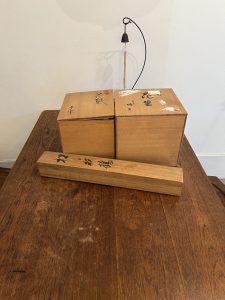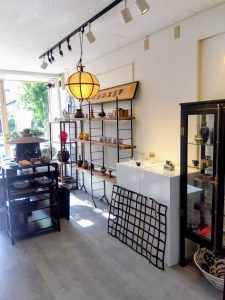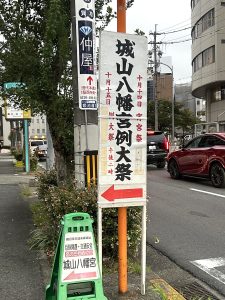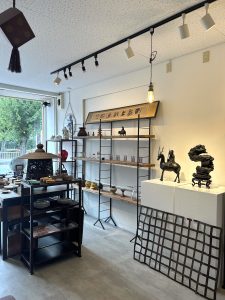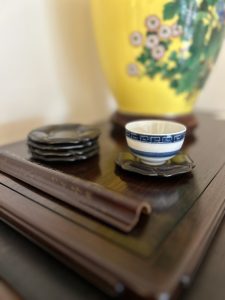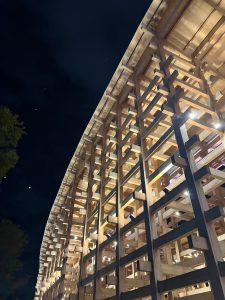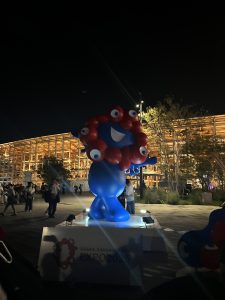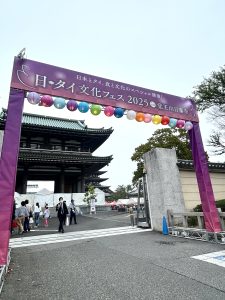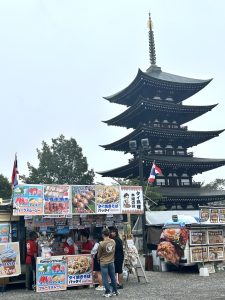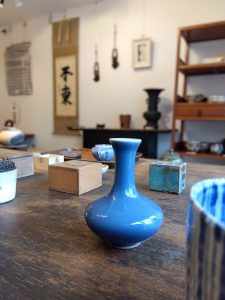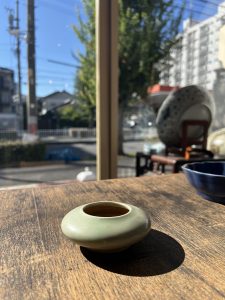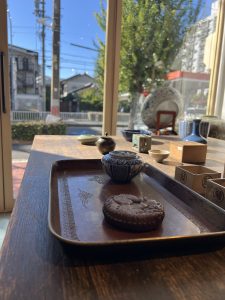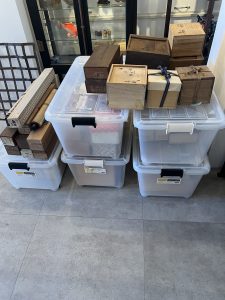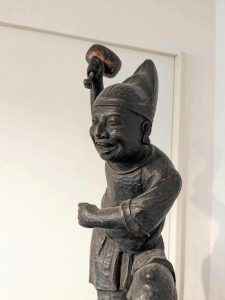
空が高く晴れわたり秋晴れとなりました。
3連休最後の本日は「スポーツの日」ですね。
この祝日は、「体を動かすことの楽しさ」や「スポーツを通じて心と体を健やかにすること」をみんなで感じるために定められた特別な日です。
もともとは「体育の日」という名前で親しまれていましたが、2020年から「スポーツの日」に名前が変わりました。
学校のカレンダーや祝日カレンダーを見て、「いつから体育の日じゃなくなったっけ?」と思う方もいるのでは。
「スポーツの日」のルーツは、1964年に開催された東京オリンピック。
このオリンピックは、戦後の日本が初めて世界の舞台で開催した一大イベントであり、「日本が平和を取り戻した象徴」ともいわれました。
その開会式が行われたのが1964年10月10日。
この日があまりにも印象的だったため、翌年の1966年に「体育の日」として国民の祝日に制定されています。
当時の日本は、高度経済成長の真っただ中。テレビの普及も進み、国民が一体となってオリンピックを応援したことで、スポーツを通して希望と活力が広がりました。
その後、2000年から「ハッピーマンデー制度」により、体育の日は10月の第2月曜日に移動したため、子供たちが喜ぶ3連休がとれるようになりました。
また、10月10日は昔から「晴れの特異日」といわれるほど、全国的に天気が安定している日でもありました。運動会や屋外イベントにぴったりだったことも、国民の祝日に制定された理由の一つかもしれませんね。
「特異日」とは何かといいますと、過去数十年の天気の結果から、「晴れ」などの特定の天気が現われる割合が、その前後の日と比べてとても多かった日のことを指します。
東京五輪開催が決定した1959年(昭和34年)発行の「気象学ハンドブック」では、10月14日と11月3日が晴れの特異日にあげられていたようですが、10月10日はあげられていなたったとのこと。しかし、天候に考慮したのは事実で、気象庁の統計や専門家の意見などから、東京から台風や秋雨前線が過ぎる頃で、晴れる確率がとても高く、土曜日にあたる10月10日が選ばれたとのこと。
では、実際にどうなったかというと、台風の影響で開会式前日まではぐずついた天気だったようですが、当日は一転して快晴となりました。
「世界中の青空を全部東京に持ってきてしまったような、素晴らしい秋日和でございます」 というアナウンサーの名言は、今も語り継がれています。
と、これまでどんなスポーツをやったことがあったっけな?と思い出してみると、野球、ソフトボール、バレー、テニス、水泳、スキーなどなど、体育の授業も含めればもっとたくさんあるかもしれません。その中で今も続いているものは残念ながらひとつもありませんが…。
最近は身体がなまってきたなというよりは、年齢とともに動かせなくなってきて悲しいかぎりなのですが、とりあえずスポーツの日、何から始めましょうか。
皆さまは今も続けているスポーツ、最近ハマっていることなど何かありますか?
ではでは、また。(スタッフT)
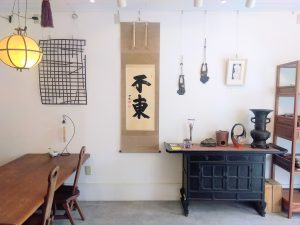
The sky is high and clear, making for a beautiful autumn day.
Today, the last day of the three-day weekend, is Sports Day.
This holiday is a special day designated for everyone to feel the joy of physical activity and the benefits of maintaining a healthy mind and body through sports.
Originally known as “Health and Physical Education Day,” it was renamed “Sports Day” starting in 2020.
Looking at school calendars or holiday calendars, some might wonder, “When did it stop being Health and Physical Education Day?”
The roots of “Sports Day” lie in the 1964 Tokyo Olympics.
This Olympics was the first major event held on the world stage by post-war Japan and was also called “a symbol of Japan regaining peace.”
The opening ceremony took place on October 10, 1964.
This date was so memorable that the following year, in 1966, it was designated as a national holiday called “Health and Sports Day.”
Japan was then in the midst of its high economic growth period. With the spread of television, the nation united in cheering for the Olympics, spreading hope and vitality through sports.
Later, starting in 2000, the Happy Monday System moved Sports Day to the second Monday of October, creating a three-day weekend that delighted children.
Additionally, October 10th has long been known as a “peculiar day for clear weather,” a day when the weather is typically stable nationwide. Its suitability for sports days and outdoor events may have been one reason it was designated a national holiday.
What exactly is a “peculiar day”? It refers to a day where, based on weather data from the past several decades, the probability of specific weather conditions, such as “clear skies,” occurring is significantly higher than on the days immediately before and after.
The “Handbook of Meteorology” published in 1959 (Showa 34), the year Tokyo was awarded the Olympics, listed October 14th and November 3rd as days with unusually high sunny rates, but October 10th was not included. However, weather considerations were indeed a factor. Based on Japan Meteorological Agency statistics and expert opinions, October 10th was chosen because it falls on a Saturday, around the time typhoons and the autumn rain front typically pass through Tokyo, making the probability of clear weather very high.
So, what actually happened? Due to a typhoon, the weather remained unsettled until the day before the opening ceremony. However, on the day itself, it turned completely clear.
The announcer’s famous line, “It’s a splendid autumn day, as if all the blue skies from around the world were brought to Tokyo,” is still remembered today.
So, what sports have I actually played? Thinking back, there’s baseball, softball, volleyball, tennis, swimming, skiing, and more—and if you include PE classes, probably even more. Unfortunately, I haven’t kept up with any of them…
Lately, it’s less that my body has gotten out of shape and more that I’m sadly finding it harder to move with age. But anyway, on Sports Day, what should I start with?
Do any of you have a sport you still play regularly, or something you’ve gotten into recently?
Well then, see you later. (Staff T)
*******************
ご実家の整理やお片付けなどをされている方のご相談などが多くございます。
お片付けなどくれぐれもご無理のないようになさってくださいませ。
風光舎では古美術品や骨董品の他にも絵画や宝石、趣味のお品など様々なジャンルのものを買受しております。
お片付けをされていて、こういうものでもいいのかしらと迷われているものでも、どうぞお気軽にご相談下さいませ。
また風光舎は、出張買取も強化しております。ご近所はもちろん、愛知県内、岐阜県、三重県その他の県へも出張いたします。
なお、毎月21日の持込鑑定会では無料鑑定・買取・ご相談など、ご予約なしで承っております。
ご近所の皆さま、ご遠方のみなさまも、お気軽にお越しくださいませ。
まずは、お電話お待ちしております。
愛知県名古屋市千種区姫池通
骨董 買取【古美術 風光舎 名古屋店】
TEL052(734)8444
10:00-18:00 OPEN
#出張買取#骨董#古美術#骨董品#絵画#版画#茶道具#刀剣#彫刻
